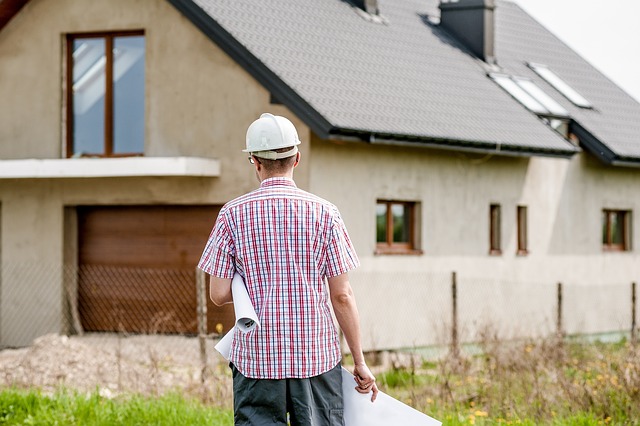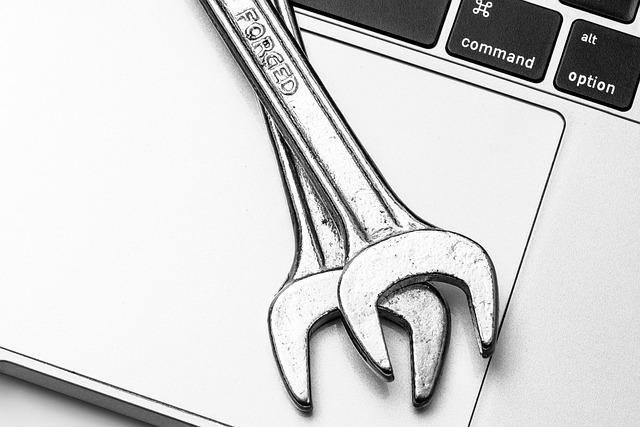Effective home repair and maintenance is indispensable for ensuring the longevity and optimal function of household appliances. Proactive steps such as careful installation guided by manufacturer instructions, regular cleaning, and routine inspections are crucial to prevent common issues like performance problems in refrigerators, leaks or draining failures in washing machines, and spots on dishes from dishwashers. For instance, ensuring a refrigerator is level and maintaining its coils clear of dust helps with temperature control and energy efficiency. Regularly checking hoses for leaks and cleaning filters in both washing machines and dryers can prevent water damage and reduce fire risks. Attention to seals and gaskets in dishwashers and ovens, along with ensuring adequate ventilation, is vital for their proper operation. Adhering to user manuals and seeking professional help when necessary can further enhance appliance performance and longevity, ultimately leading to a more comfortable, efficient, and safe home environment. These maintenance practices not only extend the life of your appliances but also contribute to reducing long-term energy costs.
When it comes to maintaining a smoothly functioning household, home appliance installation and repair play pivotal roles. This article demystifies the process of installing new appliances and addresses common issues that may arise with existing ones, offering practical repair solutions. Additionally, it outlines maintenance best practices to help you prolong your appliances’ lifespans, ensuring your home remains a bastion of comfort and efficiency. Dive into the nuances of home repair and maintenance for insightful guidance on keeping your appliances in peak condition.
- Understanding the Basics of Home Appliance Installation
- Common Issues in Home Appliances and Effective Repair Solutions
- Maintenance Best Practices to Prolong Your Home Appliances' Lifespan
Understanding the Basics of Home Appliance Installation

When addressing home appliance installation, it’s crucial to approach the task with both caution and precision. Proper installation ensures the safety, efficiency, and longevity of your appliances. Before attempting to install a new appliance, familiarize yourself with its user manual, which typically includes specific installation instructions tailored to that particular model. This step alone can prevent numerous potential issues and save time during the setup process.
For instance, when installing a refrigerator, it’s imperative to ensure that it is level to avoid any damage to the unit or issues with its performance. Similarly, connecting the appliance to the correct power source and water supply lines requires careful attention to avoid leaks or electrical hazards. It’s also essential to consider the spatial requirements for each appliance, guaranteeing there’s adequate clearance for airflow and operation. Regular maintenance checks post-installation are equally important. Home repair and maintenance practices involve periodic inspection of connections, seals, and moving parts to detect wear or potential malfunctions early on, thereby minimizing costly repairs down the line. Adopting a proactive approach in home appliance installation and regular upkeep can greatly contribute to maintaining a smoothly functioning household environment.
Common Issues in Home Appliances and Effective Repair Solutions

When it comes to home appliances, common issues can arise from everyday use or mechanical wear and tear. These problems often manifest as poor performance, strange noises, or complete malfunctions. A frequent concern is refrigerators not maintaining the correct temperature, which can spoil food and affect safety. Solutions for this might involve checking and cleaning the coils, ensuring the door seals are tight, and verifying proper insulation of the unit. Washing machines may present issues like leaking or failing to drain, typically caused by clogged hoses or a malfunctioning pump. Homeowners can address these by inspecting and replacing worn components, ensuring hoses are securely connected, and clearing out debris from filters and hoses. Dishwashers often face problems such as not starting or leaving spots on dishes, which could stem from faulty switches, damaged door latches, or improper detergent usage. Troubleshooting involves checking electrical connections, repairing or replacing latches, and adjusting the detergent dosage for optimal cleaning results. Ovens that fail to heat or produce uneven cooking can be a result of a faulty element, thermostat issues, or broken wiring. Repairing these requires careful inspection of the heating elements and their connections, as well as testing and replacing the thermostat if necessary. Microwaves might stop functioning or display touchpad issues, which often necessitate checking the high-voltage diode, capacitor, or power source. In all cases, proper home repair and maintenance can prevent many of these issues by encouraging regular cleaning, inspecting for wear, and performing routine checks to ensure everything is operating as intended. By addressing problems promptly and with the right techniques, homeowners can extend the lifespan of their appliances and maintain a comfortable, efficient living environment.
Maintenance Best Practices to Prolong Your Home Appliances' Lifespan

Regular maintenance is a critical aspect of prolonging the lifespan of your home appliances, which falls under the broad category of home repair and maintenance. To maintain optimal performance and prevent costly repairs or replacements, it’s advisable to perform routine checks on each appliance. Start with cleaning or replacing filters as these are pivotal for maintaining efficient operation, particularly in HVAC systems where dirty filters can restrict airflow and strain the system. For refrigerators, ensure the coils at the back or bottom are free of dust and debris, as this ensures better heat dispersion and energy efficiency. Washing machines and dryers should also be inspected regularly; check hoses for leaks, tighten connections, and clean the lint trap after every use to minimize fire risks and maintain effective functioning. Additionally, dishwashers and ovens require similar attention to detail, with a focus on cleaning seals, inspecting door gaskets, and ensuring that ventilation systems are not obstructed. By incorporating these maintenance best practices into your home repair and maintenance schedule, you can extend the life of your appliances significantly and save on energy costs over time. It’s wise to consult the user manuals for specific care instructions tailored to each appliance, and consider enlisting the help of professionals for tasks that may be beyond your DIY capabilities.
When it comes to ensuring your home appliances function optimally, a solid grasp of installation protocols, a proactive approach to maintenance, and swift response to issues are key. This article has demystified the basics of home appliance installation, illuminated common problems and their repair solutions, and outlined maintenance best practices that collectively prolong your appliances’ lifespan. By adhering to these guidelines, homeowners can enhance efficiency, safety, and longevity within their living spaces, contributing to a more comfortable and functional environment. Regular upkeep and informed repairs are cornerstones of home repair and maintenance, ensuring the smoothest operation of your appliances day after day.
